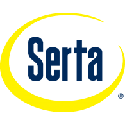By, Alan Garton, GS1 US
The use of U.P.C barcodes has become a requirement of doing business in most retail and distribution channels. Retailers generally have the expectation that suppliers will place barcodes on their products and that they will comply with global standards for formatting and accuracy.
Needless to say, companies who are asked to apply U.P.C. barcodes typically have many questions such as where do I begin, what will bar codes do for my business, do I really need them, and what purpose will they serve?
The process begins by understanding the requirements of retailers. Many retailers require their suppliers to use Global Trade Item Numbers® (or GTINs) in their product identification process. GTINs are the numbers that appear in a U.P.C bar code and include a GS1 Company Prefix, which can be acquired through a license agreement with GS1 US.
When used properly, GTINs uniquely identify a product when it is scanned at various points in the supply chain – most commonly at the checkout counter in a retail store. Retailers then use the information collected through the scanning process to track sales trends and maintain proper inventory levels which in turn enables appropriate re-orders.
Understanding answers to some common myths is important when proceeding down the path of identifying your products with U.P.C.s
Myth:
I’m not selling my products with a major retailer so I don’t need U.P.C.s
Reality:
Barcoding has become commonplace and waiting to apply them to your product may end up putting you at a disadvantage in the long run. In fact, many retailers may assume you have already barcoded your products without asking. Being unprepared can cause multiple challenges that range from having to change packaging for existing products to competing with companies that have already leveraged barcode technology.
Myth:
I only sell products on line, so I don’t need U.P.C.s
Reality:
More and more online retailers are requiring unique product identification. The same identifier used on products in physical stores is the same identifier you use to identify products on line.
Myth:
Single barcodes purchased through third parties are just as good as those used in GS1 Company Prefixes assigned directly to my company by GS1 US.
Reality:
Barcodes sold and assigned by third party companies scan just fine at the checkout counter. However, if a retailer chooses to confirm brand ownership through the GS1 Global Party Registry, the barcode provided by the third party will not point to you as the brand owner but will rather point to the company that assigned the barcode. Also, since you will not have acquired a GS1 Company Prefix from GS1 US, you will not be able to meet other business needs such as Serial Shipping Container Codes (128 labels), which in addition to the U.P.C., are often required by retailers.
In summary;
How can you be sure that your company will be compliant with global bar coding standards and fulfill the requirements of retailers?
GS1 US has worked closely with companies offering supply chain solutions and services to ensure that our members have access to qualified resources. Companies agreeing to participate in the GS1 US Solution Partner Program are staffed with individuals who hold certificates as GS1 Standards Professionals. They are not only experts in the application of barcodes but are also experts in all facets of GS1 Standards. They understand your needs and can help you along your journey.






Comments are closed.